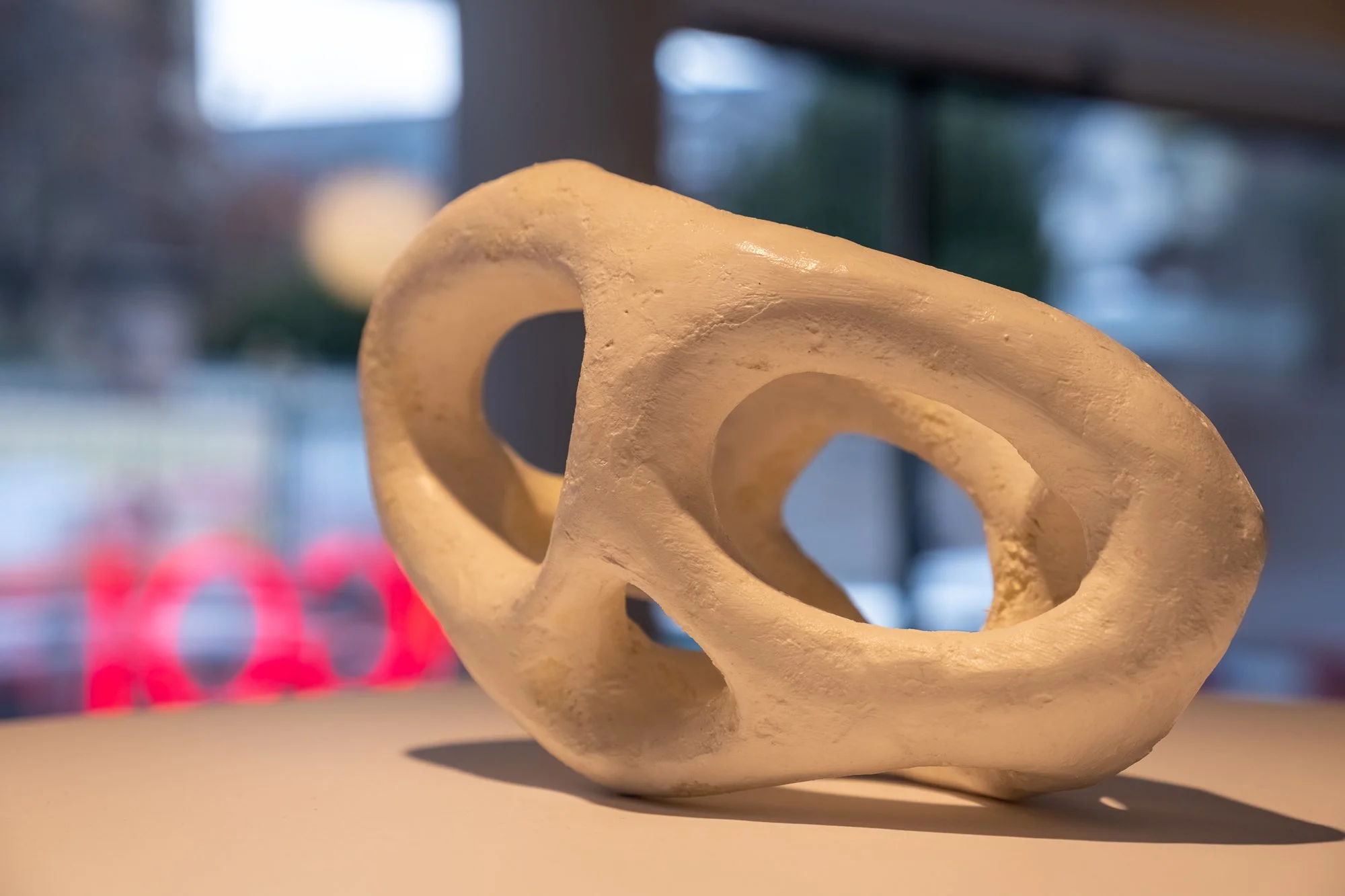Michael Kukla extends this nesting structure into the plastic by having the superimposed paper sheets recur in a laminated wood structure, from which a web-like, veined fabric framework is exposed with drillings and by filing and sanding, showing multi-layered superimposed openings. Forstner drills were guided at an angle or individual layers of veneer were removed entirely. This creates the impression of a cellular wall. Hence the logical decision to also curve the surface once again and suggest a development process instead of strict perfection.
Kukla - WSF series
As an inanimate manufacturing method, a work created with a random generator from a 3D printer would be far too technical an approach. Here, however, the translucent deep space is handmade. The silvery color allows light to create shadows in relation to the curvatures and reflect back from the depths. Levels of brightness and points of light offer here a softly dull matte sheen to the surface, a change that leads to or stems from the viewer's movement.
Free swinging modules are furthermore informally provided with spots and stripes, which expand the strictness of the concrete conception and play through freer forms. In other material, the bulging pneumatic foil bodies with their perforations offer a light-modulating layered overlay. Perhaps a similar process is evident here as in the history of Abstraction, which has moved from basic geometric forms to biomorphic to violated surfaces with scratches and fissures of gestural traces to materiality as surface.





In these two artists, Concrete Art is largely associated with sensual sensibility. The worlds of appearance take precedence over any narrative. The careful designs do not demand much, but neither are they banal or boring. They give rise to alertness of mind, serenity of spirit and refinement of the senses, as Georg Schmidt put it.
Dirk Tölke






